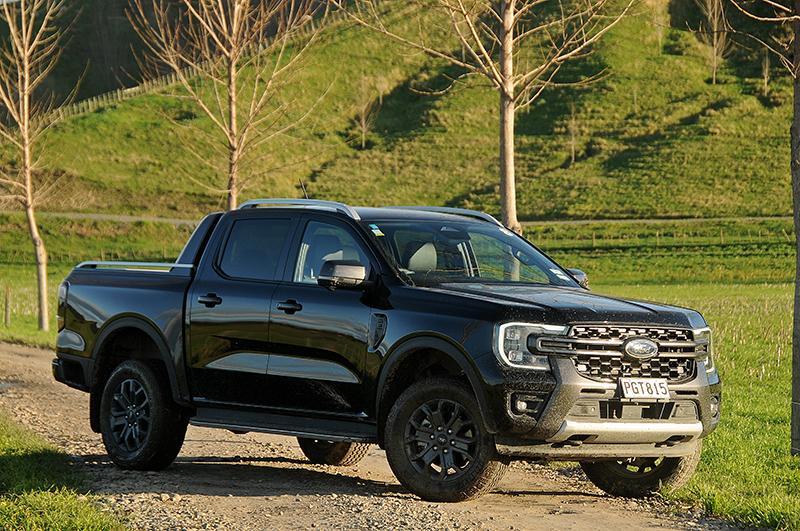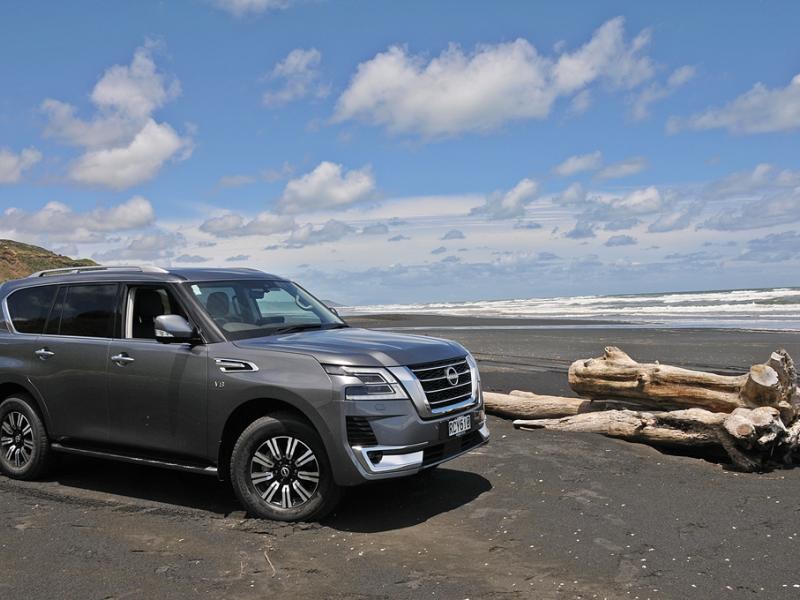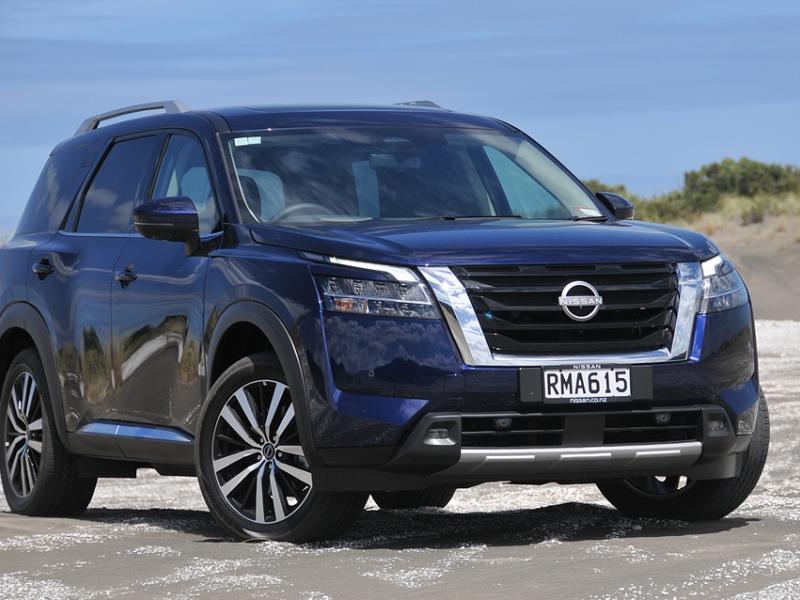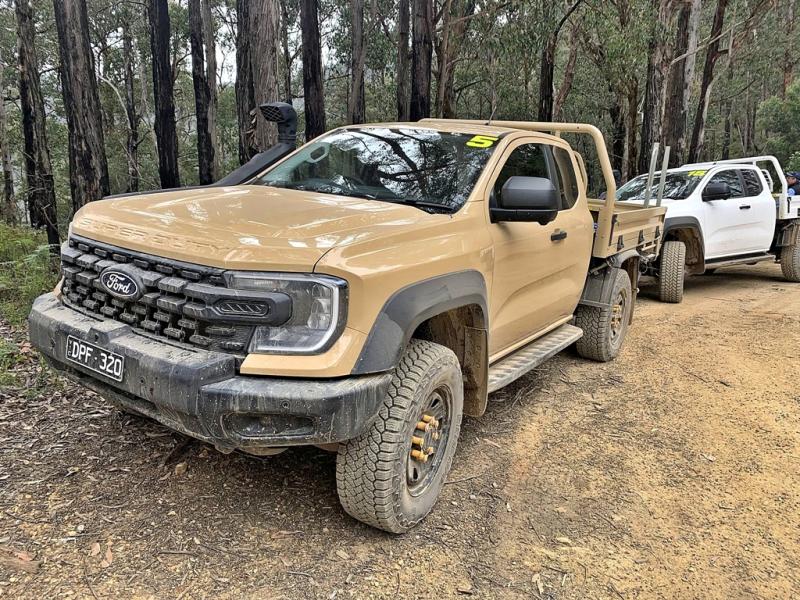Things are looking up for the market hero
New Zealanders are a unique bunch, born of some old cliches about number eight wire and such, and we Kiwis do love the outdoor, ‘work-hard, play-hard’ lifestyle.
Central to that is having a broad choice of vehicles that suit those lifestyles. For the past few years, diesel double-cab utes have been the ‘it’ vehicle for tens of thousands of New Zealanders.
The Ranger has come a long way from the early days when the badge was interchangeable with the long-gone Courier name. Since those days, every model change and every facelift has been heralded by new engines, drivetrain tweaks, fresh panel steel and cracking new upgrades to electronics.
The outgoing Ranger has been Ford’s most successful yet, and it now bows out to give the new next-generation version a clear shot at goal.
Ford’s new ‘next generation’ Ranger is user-generated; designed, engineered and tested in Australia and NZ and stacked with tech and spec. It is arguably the most eagerly awaited ute (or pickup) of recent years.
The story of the next-gen Ranger started back in 2016 with a commitment from Ford to use a multinational development team working across eleven separate areas to bring the Ranger from concept to reality in Australia.
Surviving Ranger run-out
It has been an odd year, with Ford suffering through the final months of Ranger run-out and some unusual statistics as a result. In July, there were 3,050 new commercials registered, a drop of 39.7 per cent compared with 5,058 in July 2021.
Toyota’s Hilux returned to the top of the stats with 957 units sold, an 18.4 per cent increase from 808 in the same month a year ago.
In second spot was the outgoing Ranger on 580, down 59.1 per cent from 1,418 units.
The Mitsubishi Triton was third with 179, a drop of 63.4 per cent from 489 last July.
Even with two quiet months damping down the stats, Ranger had sold 5,476 at the half year. Imagine the frustration of having to work through a couple of months of minimal run-out stock while waiting for the car carrier ships to disgorge new product onto the wharves.
At the Ranger’s Hawke’s Bay launch event in late July, Ford NZ Managing Director Simon Rutherford mapped out the company’s planned mid-term plans. Electricity might be the ‘later’ future, but for the immediate future the company will not – cannot – simply walk away from the diesel double cab utes and mid-sized SUVs that New Zealanders want and need.
“I can confirm our commitment to the Ranger and Everest, and can also say that we have a solid 5,055 firm deposit paid orders for ranger to satisfy over the coming weeks.”
Supply-chain allowing, that could mean the next-gen Ranger takes Ford well past 11,000 sales for 2022 and even as high as 15,000.
Kicking for goal
By our count, there are up to 15 different models in the Ranger line-up. We are sure the rear-wheel-drive Rangers will have their following and of course they have their uses – but this is all about the main event, the launch every red-blooded Kiwi enthusiast has been waiting for: a whole ‘rugby sevens team plus reserves’ worth of new 4WDs.
So which Ranger will suit which end user?
Commonality: All the Rangers are new from the ground up, and setting aside the drivetrain differences for the moment, the most telling change is in the chassis. Growing 50mm longer (wheelbase) and 50mm wider (track), the new Ranger is at once more stable and command-capable than the outgoing version.
Outside, the body also grows longer, especially at the front and (to maintain proportionality and load-carrying capability) also at the wellside. That means the engines are further within the wheelbase to benefit driving dynamics, and along the way it endows even the double cabs with a decent load space and also decent rear passenger legroom.
Extensive other changes to the suspension include some geometry tweaks that derive from the outgoing Raptor, and moving the rear shock absorbers to give them more direct ‘action’ on the axle.
Have your say, folks
User-generated feedback has played a significant part in the genesis of the new truck, with quality information gained through in-depth focus group sessions based around families who either own a Ranger or one of its rival designs. The process has helped guide the new Rangers through design and development all the way to launch time. The process brought about some interesting advances in ergonomics (how the vehicle ‘fits’ the user) and ease of access (the door apertures and grab handles show careful thought that benefit the occupants as they climb in and out of the truck; the whole range gets a very practical wellside step called a ‘box step’ for the first time).
The front end has been designed to join the look of the bigger Ford pickups built for the American market. It is broad and driver-friendly, the bonnet clearly marking the edges of the vehicle both on and off road.
The big, perpendicular infotainment touch screen is fully integrated in the dash may well start a design trend away from the stuck-on look seen in many utes over the past four or so years.
More tech: the e-shifter reminds us of mothing so much as a computer mouse of the type favoured by gamers. It has a palm-sized upper surface and there are ‘+/-’ clicker buttons on the side of the shifter that fall easily to hand (thumb).
The location of the centre console armrest is natural and easy to get used to, and it leaves the driver’s left arm placed right above the drive mode dial-and-button array, which in turn is simpler to use and more intuitive that ever.
In and out, up and down, no problem
At the cab-side, the step-handgrip location makes getting into and out of the big truck an easy no-brainer. Likewise, those big rear doors open wide for unimpeded access to the rear seats. Moving the crew becomes simplified, even if the rear seat passengers are six-footers.
Perhaps the best piece of interior ergonomic design is the interior door handle. At first glance there are no door handles, just a sculpted door card design incorporating door-pull structures. But from the seat, inside a slot in the smaller armrest, and aligned perfectly with the occupant’s thumb and fingers, is a solid ‘clicker’ that is activated by a pinch movement.
The application of the ‘box step’ between the rear wheel and the tail is both practical and popular, and means owners can hop up to rummage through their gear without necessarily having to drop the tailgate to do so.
Out back, the track increase that enhances driving dynamics also delivers load space. The next-gen Ranger’s tray now fits a ‘Euro’ pallet. Moving rear dampers outboard of the springs not only helps enhance ride and driving characteristics but makes load-carrying simpler.
Tradies rejoice – the load space is made even more versatile with the addition of a one metre ruler and cupholders built into the tailgate work surface. All that is needed back there now is an official Fisheries rule for measuring up snapper after a successful fishing weekend at ‘spot X’.
Into the mechanicals
Diving under the bonnet (or is that ‘hood’ now?), a clever blend of old and new awaits. The familiar Bi-Turbo four-cylinder common rail diesel from the outgoing model (154kW, 500Nm) is available almost right across the 4WD range. This engine has an inlet charge bypass system that enables its turbochargers can operate in series at lower engine speeds to maximise torque and responsiveness to bypass the smaller turbo for pest delivery of power and torque in the mid-range and above.
The bigger news is the arrival of a 3.0L V6 turbo-diesel engine that produces 184kW of power at 3,250 rpm and 600Nm of torque from 1,750-2,250 rpm. Leaving aside the big American pickups arriving here (Ram and Chev) that’s a class-leading torque figure.
Should we mention the shadow models? Everest is arriving on the market right now, and remains closely based on the Ranger. That means the SUV that has won us over in the past couple of years is taking a similar step forward as the Ranger does.
It is widely known now that there’s a sea-change coming for all manufacturers as governments around the world announce their intention to ban sales of new vehicles using internal combustion engines.
Ford is preparing for the change with new electric-enhanced models for all such markets, but in the meantime the company is also dedicated to providing the vehicles its customers want and need.
On the ‘want’ side of the ledger is the Ranger Raptor. When it goes on sale, the new Raptor will only be offered with the 3.0-litre V6 EcoBoost (petrol) twin turbo engine producing 292kW and 583Nm. That’s a torque rating barely short of the 600Nm available in the V6 diesel versions. This will be the only petrol engine offered in any Ranger, and with diesel and petrol pretty much neck-and-neck on cost at the moment it opens up Raptor to a much bigger ‘user-chooser’ target audience than previously. The switch to petrol power requires the Raptor to use only 98-octane though.
As for a manual transmission, don’t go looking for one here. Manuals are old school tech when there are enormously capable ten speed automatics and decent low range ratios to cater to pretty much every off-road need.
The transmissions for all the 4WDs are updated versions of the proven ten-speed automatic. These are backed by centre diff/transfer case/rear diff combinations that include clutch-type electronic centre diff units and electronic-locking rear diffs.
Inside the cab, the transmissions in the top-end models are controlled by a cool new e-shifter unit that strongly resembles the best of the current crop of computer mouse designs for gamers. Behind the shifter is a dial that controls drive functions – shifting from Hi4 to Lo4 and Auto4 by segments of a button – and electronic modes like ‘slippery’ and a useful ‘Eco’ mode for road use that changes the throttle pedal’s fly-by-wire pre-sets for the engine (softening response) and also locks out the front end so the truck is rear wheel drive.
Selecting Lo4 in these top end trucks automatically disables traction control so that the driver to maintain momentum in sloppy going. That is clever.
Verdicts – split
There’s just too much detail to rack out without turning NZ4WD into the Ranger version of War and Peace. More info will need to wait for the in-depth drive reports to come.
As an interim summary, though the XL models will do the hard work on farms, forests and building sites all over New Zealand, there is so much more to the range of Rangers.
Those who want to work hard, play hard and still go out of an evening or dash off to beach or bach for the weekend (and who doesn’t?) will find much to persuade them to budget for the upper model specifications.
Ignoring the ‘ute tax’ and its unavoidable implications, the pricing of the new Rangers only climbs slightly over the models that are being replaced.







